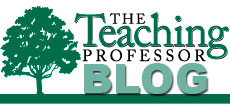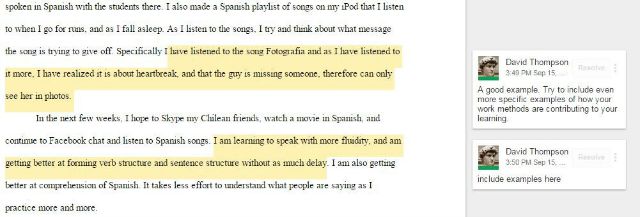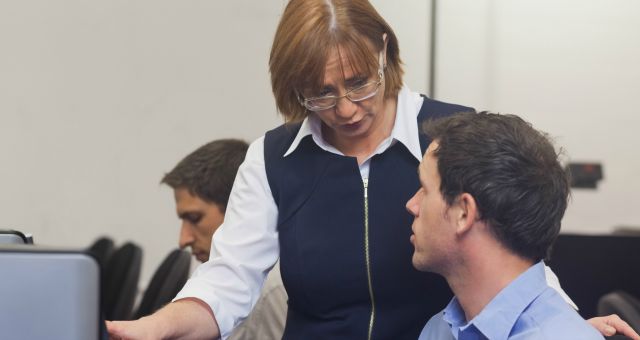The flipped classroom is a student-centered approach to teaching that involves reversing the design of the learning environment, allowing students to engage in activities, apply concepts, and focus on higher level learning outcomes during class time.
Read more ›CURRENT ARTICLE • August 19
OTHER RECENT ARTICLES
There’s only one first day of class. Here are some ideas for taking advantage of opportunities that are not available in the same way on any other day of the course.
Read More ›This summer I am reading Linda Nilson’s book Creating Self-Regulated Learners: Strategies to Strengthen Students’ Self-Awareness and Learning Skills, which offers instructors a wealth of assignments and activities to help students grow their self-regulation and metacognitive abilities. Teaching students how to learn well on their own and to evaluate that learning is a goal I have been pursuing for the past few years, and I am convinced that occasional, brief self-assessment exercises can help college students perform better as well as understand the learning process.
Read More ›Showtime in the Classroom: Seven Ways Streaming Video Can Enhance Teaching
 Many faculty seek to make creative use of films in their teaching, whether in traditional class screenings or through flipped classrooms. However, there are many obstacles to teaching with videos: the costs and constraints of DVD as a technology; limited DVD collections at some libraries; time involved in creating videos for one’s own classes; the popularized, questionable nature of many videos found on YouTube; the lack of institutional subscriptions to mainstream streaming services; and copyright concerns. Fortunately, in recent years, most campus libraries have subscribed to copyright-licensed and academically oriented streaming video collections such as Kanopy, NBC Learn, Films on Demand, PBS Video Collection, and Swank’s Digital Campus. These “Netflix” of academia offer fantastic functionalities and curated content designed with pedagogy in mind.
Many faculty seek to make creative use of films in their teaching, whether in traditional class screenings or through flipped classrooms. However, there are many obstacles to teaching with videos: the costs and constraints of DVD as a technology; limited DVD collections at some libraries; time involved in creating videos for one’s own classes; the popularized, questionable nature of many videos found on YouTube; the lack of institutional subscriptions to mainstream streaming services; and copyright concerns. Fortunately, in recent years, most campus libraries have subscribed to copyright-licensed and academically oriented streaming video collections such as Kanopy, NBC Learn, Films on Demand, PBS Video Collection, and Swank’s Digital Campus. These “Netflix” of academia offer fantastic functionalities and curated content designed with pedagogy in mind.
We are definitely way more interested in learning than we used to be. In the early years of my teaching and faculty development work, it was all about teaching: improve it and students will automatically learn more. Now the focus is on how students learn and the implications that has for how we teach.
Read More ›Flipped learning environments offer unique opportunities for student learning, as well as some unique challenges. By moving direct instruction from the class group space to the individual students’ learning spaces, time and space are freed up for the class as a learning community to explore the most difficult concepts of the course. Likewise, because students are individually responsible for learning the basics of new material, they gain regular experience with employing self-regulated learning strategies they would not have in an unflipped environment.
Read More › My educational philosophy is a combination of how I desire to teach and my motivation to be a lifelong learner. As a teacher at the Army Management Staff College, I am constantly learning during classroom and student interaction. Therefore, I am also a student. According to the Center for Educational Innovation at the University of Minnesota (2014):
My educational philosophy is a combination of how I desire to teach and my motivation to be a lifelong learner. As a teacher at the Army Management Staff College, I am constantly learning during classroom and student interaction. Therefore, I am also a student. According to the Center for Educational Innovation at the University of Minnesota (2014):
INTRODUCTION:
Your “how to” blog post should teach the reader how to do something by breaking it down into a series of steps.
Begin your blog post by explaining what problem you are going to solve through your explanation and be sure to include any relevant keywords. Add in a personal story to establish your credibility on this topic. And make sure to end your blog post with a summary of what your reader will gain by following your lead.
Need some inspiration? Check out these "How-To" examples from the HubSpot blog:
- How to Write a Blog Post: A Simple Formula to Follow
- How to Do Keyword Research: A Beginner's Guide
- How to Write an Effective Meta Description (Yes, They Still Matter)
Students perform poorly in our courses for a variety of reasons. Here are some students you’ve likely encountered over the years, as well as a few ideas on the type of feedback that best helps them turn things around.
Read More ›Using a Discourse-Community-Knowledge Framework to Design Writing Assignments
 The educational benefits of writing are undeniable. Challenging students to write about our disciplines for diverse purposes and audiences deepens learning and promotes critical thinking. And so we put a great deal of effort into creating writing assignments that do not merely ask students to report back to us the content we have “delivered," but instead require them to explore course content and address a target audience that has specific needs.
The educational benefits of writing are undeniable. Challenging students to write about our disciplines for diverse purposes and audiences deepens learning and promotes critical thinking. And so we put a great deal of effort into creating writing assignments that do not merely ask students to report back to us the content we have “delivered," but instead require them to explore course content and address a target audience that has specific needs.










